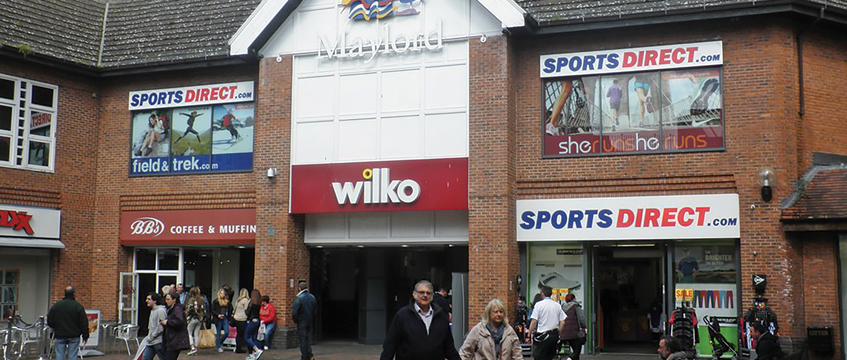‘Custodians of social value’: councils plan new community uses for malls
News
by
Pui-Guan Man and James Child
Local authorities’ shopping-centre spending spree over recent years is now set to see swathes of retail space turned over to other community uses.
Analysis by Radius Data Exchange reveals that some 44% of council landlords that bought £290m-worth of shopping centres in the past three years have set out plans to repurpose them for community uses, such as artist studios and entrepreneur workspaces.
Almost one-fifth of the shopping centres are likely to be demolished in favour of green spaces or redevelopment into other uses, including housing.
Local authorities’ shopping-centre spending spree over recent years is now set to see swathes of retail space turned over to other community uses.
Analysis by Radius Data Exchange reveals that some 44% of council landlords that bought £290m-worth of shopping centres in the past three years have set out plans to repurpose them for community uses, such as artist studios and entrepreneur workspaces.
Almost one-fifth of the shopping centres are likely to be demolished in favour of green spaces or redevelopment into other uses, including housing.
The plans underline councils’ efforts to use sites not only as investments, but also to support their town centres and communities, often by looking for alternative uses for the space.
Southend-on-Sea Borough Council bought the town’s Victoria Centre for £10m last year and is expected to turn some of the property into space for creative industries and local entrepreneurs.
Ron Woodley, deputy leader of the council, said at the time that while income from the centre will “cover the borrowing cost of buying it”, its “strategic value is what’s important”.
“It offers future regeneration benefits and a real opportunity to make a positive impact on the high street and town centre area,” he said.
Stockton Council is knocking down its 348,000 sq ft Castlegate shopping centre to create a new riverside park, with scope for a new library, customer service centre and council headquarters. Bolton Council aims to turn its near-280,000 sq ft Crompton Place shopping centre – bought in 2018 for £14.8m – into a mixed-use scheme including a 110-bedroom hotel, 150 homes and office space.
Herefordshire Council, which bought the leasehold for Maylord Orchards shopping centre last year, plans to repurpose the mall as a new library and learning resource centre with a community re-use café.
Only a quarter of local authority landlords plan to retain significant retail and leisure elements to anchor the malls they have acquired and 37% have not yet outlined any proposals, with the Covid pandemic putting the brakes on many plans.
Curating spaces
Councils have been criticised over recent years for using cheap public debt to buy retail assets, but experts say these new figures suggest councils may cleverly have bought assets to add value to their communities.
Tim Vallance, head of investor services and retail chairman at JLL, said local authorities will not have purely commercial aims and are ideally placed to act as “custodians” of towns and cities and to retain shops where there is still local demand.
“One of the problems local authorities have faced is that critics have focused on the commercial side of it, saying they have used public finances to pay too much for assets that will not perform,” Vallance added. “While I wouldn’t argue with that, I think it is important to look beyond that. They are the only owners that can curate spaces and buy adjoining spaces to create what is required for communities.”
Charlie Barke, a partner at Knight Frank who leads the agency’s shopping centre and high street capital markets division, said local authorities can “take the long-term view that many private sector investors cannot”.
“There are so many more benefits that a local authority can take from improving shopping centres, than simply through their [book] values, as the owner,” he said.
Barke added that local authorities have borrowed for decades on amortising loans, as with Public Works Loan Board facilities. That means it matters less if book values decline – providing the council is paying back those loans – since they would not necessarily intend to sell the centres.
“If that value of the asset goes down over the long term, that’s less relevant,” said Barke. “What’s much more important is ensuring the vitality and prosperity of what is probably the most important commercial town centre asset.”
Kevin White, a partner in Montagu Evans’ asset strategy and development division, said there is a role for the public sector to be “the custodian of a place where the financial return metrics aren’t there, but the social value metrics are”.
“Because a cinema isn’t viable, should a community not have one?” he said. “If not, would we have the same view about a park, a school or a library? None of those are viable on strict financial return metrics, but all are critical to a successful local economy.”
To send feedback, e-mail pui-guan.man@egi.co.uk or tweet @PuiGuanM or @estatesgazette
Photo: Roger Cornfoot











